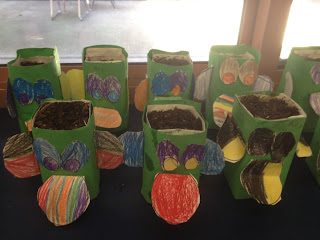While there are a number of different philosophies of behavior management, I feel the most important aspect is to have a discipline design that is carefully planned and easy to execute. Classroom management starts on the first day of school when the students walk through your door. I believe is important to create a learner-friendly environment right away. I will strive to create a pleasing environment for students to grow in and if you invest time to get to know them for who they are, I feel like classroom management will be much simpler because you will have gained the students’ respect.
However, an unruly classroom can begin with just one unengaged student and escalate into total classroom disruption. I believe that keeping students active and engaged makes managing a classroom much easier. I have found that it is those students who are acting out and disrupting the lesson that are yearning for attention the most. These students are the ones that teachers so easily decide to give up on but are the ones who need the attention. For a teacher, this can be extremely frustrating. Often times, it is the students that are unmotivated and disruptive that are given the most attention during a lesson. Unfortunately, the rest of the class has to suffer from the time that the teacher spends of dealing with these students instead of instructing.
From the first day of school, I present my classroom expectation; be respectful, responsible, and have a positive attitude. Once students know what my expectations are, I will have the class come up with specific examples how ways that students can meet these expectations. They will come up with three to four examples for being respectful, responsible and having a positive attitude. I believe that it is important for students to know have access to consequences for classroom disruptions. This will be done by having a consequence chart posted at the front of the room. This will not get negotiated and will already be created by the teacher. As a class, we will go over what happens after each step. I want to remind disruptive students that “every day is a new day!” The consequence chart will list: 1- Verbal Warning 2- Pep talk 3- To the Office.
There are a wide variety of practical strategies that I plan to keep in my classroom management toolbox for unmotivated and disruptive students. First, I think that it is important to create win-win authority relationships. Also, I aim to make success possible for ALL students. I will do this by accommodating a large range of acceptable learning behaviors for a wide range of academic behaviors. All students need to make authentic connections with their teachers. So for the students that are disruptive and unmotivated, I will do my best to find a connection. Maybe this is playing soccer at recess, having them be helpers in another classroom, or finding an activity that will make them feel successful. My classroom management revolves around positivity. This means that non-traditional learners' needs must be supported through a variety of creative solutions. After all, learning and teaching should be fun! Disruptive students need to be taught how to follow the discipline code that is rigorously and fairly enforced. Classroom management is about procedures becoming routines. Routines give structure to the instructional environment. According to Tomlinson, (2001) differentiation
addresses variance in content, process, and product. Tomlinson states
that this approach is “responsive” teaching rather than planning
instruction that reflects “one-size-fits-all” students
. Differentiation
is delivered to help all students, no matter what age, learn
efficiently as possible. Improved achievement is
promoted when teachers are attentive to students’ preferences of
learning. Tomlinson reports that student motivation and student
attention to tasks increase when the topics of study reflect personal
interests of students. So for unmotivated and disruptive students, it is important for the teacher to differentiate. This allows teachers to focus on essential skills in each
content area, be responsive to individual differences, incorporate
assessment into instruction, and provide students with multiple avenues
to learning.
References:
Tomlinson, C.A. (2001). How to differentiate instruction in mixed-ability classroom. ASCD
Publications, Inc.: Alexandria, VA.












